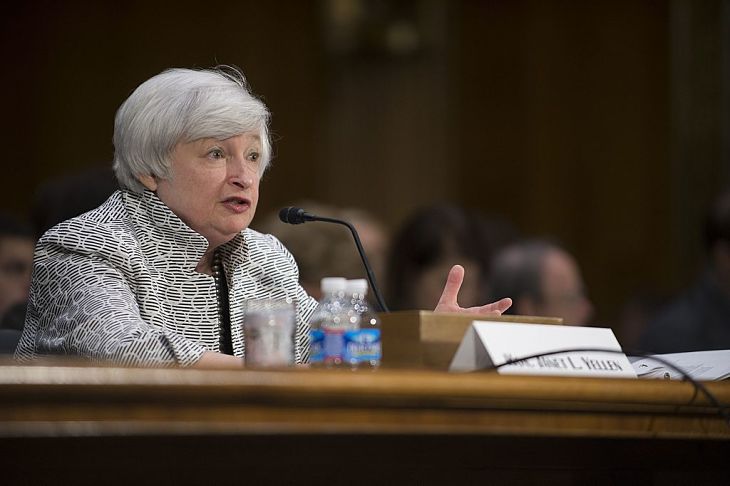As a way of thinking about where rates may normalize, Yellen puts this review in the useful context of the neutral real rate. That is the real (inflation adjusted) interest rate which neither accelerates nor decelerates inflation. The Fed’s current estimate of the neutral real rate is about zero, meaning fed funds at around the inflation trend. Core PCE, the Fed’s preferred measure of inflation, has averaged about 1.6% since 2014. Putting the pieces together, with fed funds at 0.75%, the Fed can easily be at neutral rate of about 1.6% by the end of the year at a stately pace.
Where does the Fed see rates longer term? Given how subdued inflation has been in the context of a fairly robust job market in the 2014-16 period FOMC members have reduced their estimates of the longer run neutral rate. Specifically the median committee member has reduced their estimate of the long run (greater than 3 years) neutral fed funds rate from about 1 3/4% to about 1%. The logic is: given that labor market has been close to its potential, inflation should have been increasing in the US if we had been close to the neutral rate. Though the Chair does say she expects that estimate of long run neutral real rate to increase in the future.
It is important to recall that the Fed has said it will begin to reduce the size of its balance sheet once it has normalized real rates. Rates will arguably be normalized when they are about 1.5% or three 0.25% hikes from now. As such, I look for discussions about the Fed ceasing to reinvest the principal and interest payments from its bloated balance sheet as rates creep toward that level.
To recap, given where the economy is today and Chair Yellen’s ruminations about fed goals and benchmarks one plausible central case for the Fed over the next 24 months would be:
- Funds increasing toward neutral real rate (currently estimated at about 1.5-2%) in the next year.
- As that is accomplished the Fed to discuss allowing the balance sheet to shrink.
- Further hikes of about 1% over the following few years.
All this assumes that the economy behaves as expected. A recession would stall or reverse tightening, a sustained inflationary spike would accelerate it. It also assumes that the new administration’s appointees to the FOMC share the same basic framework as current members.
As always we will continue to monitor the Federal Reserve closely and update our clients as our analysis changes.
John Eckstein is the CIO at Astor Investment Management, a participant in the ETF Strategist Channel.
Disclosure Information
All information contained herein is for informational purposes only. This is not a solicitation to offer investment advice or services in any state where to do so would be unlawful. Analysis and research are provided for informational purposes only, not for trading or investing purposes. All opinions expressed are as of the date of publication and subject to change. Astor and its affiliates are not liable for the accuracy, usefulness or availability of any such information or liable for any trading or investing based on such information. 2017-60

